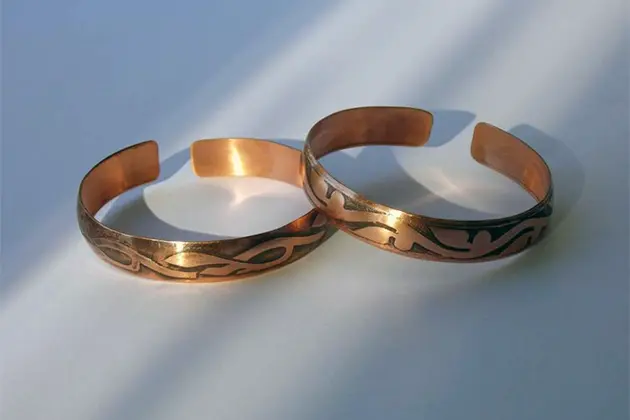The ancient Greek philosopher and physician Empedocles wore copper sandals. He claimed that was the reason he never had foot pain.
Years and centuries passed, and the renowned Eastern physician Ibn Sina, in his famous “Canon of Medicine,” advised using copper powder for broken bones and binding copper plates to wounds and ulcers. However, official science long regarded such claims with a condescending smile, believing that copper is present in nearly all food. Could it really be necessary? Thus, could copper serve as a medicine? The thunder struck in 1964 when the first case of copper deficiency in a patient was discovered. Soon, it became clear that there was a significant gap between the intake of this metal, the human body’s needs, and the ability to fully utilize it. Copper deficiency often arises from inadequate nutrition or impaired absorption in the intestines, as well as prolonged diarrhea. Additionally, increased radiation exposure demands higher amounts of this metal. Meanwhile, the copper intake for both adults and children from food is often below the recommended norm (2-3 mg per kg of body weight per day).
But it’s not just about quantity; quality matters too. The brain and liver require more copper.
It’s no coincidence that the well-known physiologist V. R. Raitses referred to the brain as a “true copper depot.” Do you have a headache? Try a little experiment. Take two old coins (they should be made of pure metal, not an alloy), slightly moisten them, and press them against your temples. If your discomfort is related to a copper deficiency, the coins will stick to your skin. After a while, they will fall off, leaving bluish, almost black circular marks on your temples. The headache will disappear. If the headache is caused by other factors, the coins won’t stick.
Professor V. I. Smolyar notes that copper deficiency can lead to anemia, reduced enzyme activity, hair defects, central nervous system disorders, issues with bone formation and development, changes in cardiovascular function, myocardial atrophy and fibrosis, ruptured blood vessels, and, consequently, sudden death.
Modern homeopaths add that a lack of copper in the body is the cause of many types of seizures. When treating such patients, they widely and successfully use metallic, sulfuric, acetic, and arsenic copper.
French homeopaths have 20 remedies that include this metal.
Now, let’s talk about copper bracelets. They are not our invention. It has long been observed that people who mine copper or wear copper items, such as a cross, are less likely to suffer from cholera. In Syria and Egypt, newborns are often given copper bracelets to prevent epilepsy and rickets. There is a growing interest in such therapeutic jewelry here as well. Unfortunately, there is very little scientific research on this topic, and what exists is fragmented.
I completely agree with the opinion of the well-known homeopathic physician T.D. Popova, author of “Essays on Homeopathy.” She writes: “Interestingly, the reactions to them can vary widely: from clearly positive to sharply negative. Some experience relief from heart pain, improved sleep, and an overall sense of emotional comfort. Others, on the contrary, may feel irritability, anxiety, and restlessness.” Despite this inconsistency, for those suffering from neurasthenia, psychasthenia, heart neuroses, and emotional stress, it’s worth trying copper bracelets. They can also benefit those engaged in intense mental work. It’s quite easy to verify the bracelet’s effectiveness. There is a phenomenon known as the “sticking effect.” If the copper item adheres to the patient’s body and the skin color changes underneath it, resulting in a green or blue stripe, it indicates a positive effect. If there is no “sticking effect” and the person feels worse, it’s best to remove the bracelet. For those who find it beneficial, we recommend following some straightforward, practical guidelines.
A copper bracelet should weigh between 150-200 grams, meaning it shouldn’t be heavier than a wristwatch with a strap. Unlike the latter, it’s better to wear it continuously on the right wrist, removing it only when taking a bath. However, if the copper bracelet is uncomfortable, you can also take it off at night. Finally, don’t wipe away the dark stripe underneath it; it will disappear and reappear on its own. This way, your body replenishes its copper reserves through the skin.

